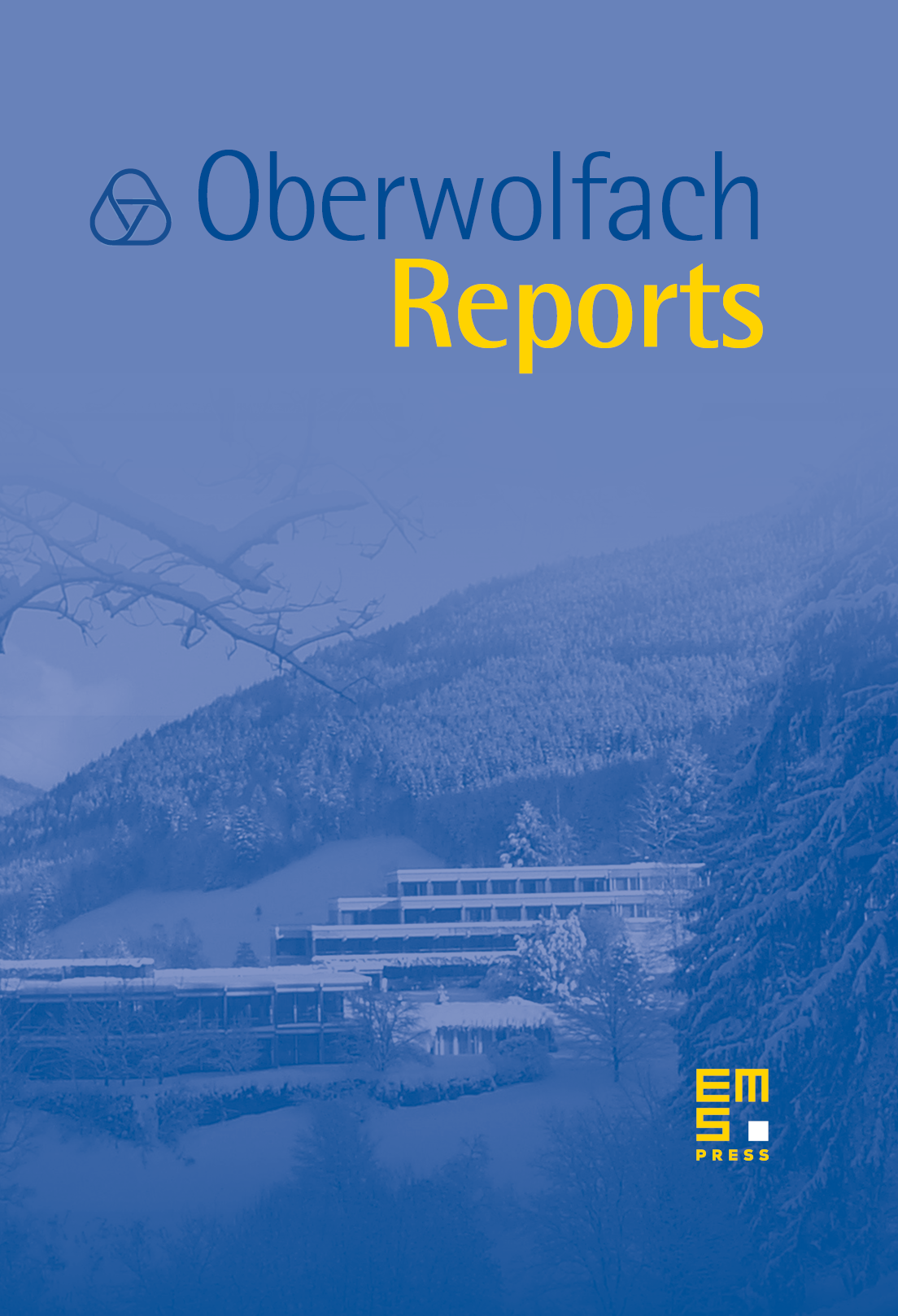Profinite and Asymptotic Group Theory
Fritz Grunewald
Heinrich-Heine-Universität, Düsseldorf, GermanyDan Segal
University of Oxford, United Kingdom

Abstract
This meeting was focused on asymptotic aspects of group theory. The resulting problems lead, in particular, to the study of infinite groups, with an emphasis on the asymptotic behaviour of their finite quotients. Also, properties of infinite families of finite groups are at the center of interest in the field.
We had talks on the most important recent developments in the field of asymptotic and profinite group theory. We single out some of these new results.
The classification of finite simple groups has provided an impetus for the detailed investigation of properties of families of groups of Lie type and of alternating groups. This has produced many results of asymptotic or probabilistic nature, describing in a quantitative way properties that hold for all sufficiently large simple groups, or else that hold ‘almost surely’ as the orders of the groups are tending to infinity. Here we had a talk of Aner Shalev on his recent solution (with coauthors) of Ore's conjecture.
Recently there has been much activity in the study of infinite groups, with an emphasis on the asymptotic behaviour of their finite quotients, or their finite-index subgroups. The theory of subgroup growth is now well established; the theory of the associated zeta functions is making good progress. More subtle variations of subgroup growth are also developing into significant theories in their own right: there are important new results on representation growth – of arithmetic groups, nilpotent groups and pro-p groups; and on maximal subgroup growth, with applications to probabilistic generation properties.
Profinite groups are ‘asymptotic limits’ of finite groups. The nature of verbal subgroups and verbal mappings, in both finite and profinite groups, has been the focus of much recent work. This has led among other things to the solution of Serre's problem on subgroups of finite index in finitely generated profinite groups; other significant results include the characterisation of closed verbal subgroups in pro-p groups and new characterisations of solubility in finite groups.
Branch groups, both discrete and profinite, are certain groups of automorphisms of rooted trees; introduced by Grigorchuk and others over 20 years ago, they have provided the solution to several outstanding problems, and their study continues to provide new results. Some of them were reported on in our meeting.
We also had talks from important fields of mathematics in which profinite and asymptotic group theory finds application. There is, for instance, the study of the absolute Galois group of the rationals and in particular its closed pro-p subgroups. Methods from pro-p group theory have successfully been applied in order to understand fundamental groups of (hyperbolic) 3-manifolds. The interplay between the topological fundamental group of a complex algebraic surface and its profinite completion which is the etale fundamental group of the surface is the subject of recent research.
We believe that the meeting was exciting and successful. The high quality lectures covered a lot of very recent results in the field. There were many intense discussions between mathematicians of different fields. Altogether there were over 50 participants from all over the world. The percentage of young researchers was very high.
The following extended abstracts were collected and edited by Dr. Evija Ribnere.
Cite this article
Fritz Grunewald, Dan Segal, Profinite and Asymptotic Group Theory. Oberwolfach Rep. 5 (2008), no. 2, pp. 1537–1588
DOI 10.4171/OWR/2008/28